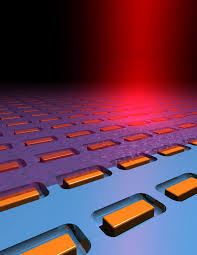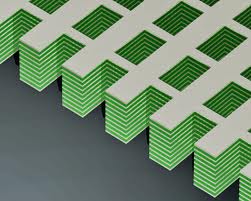Nano Antennas:

Introduction of the antenna concept into the optical, infrared and terahertz frequency regime holds promise for a wide range of novel applications. Optical nano-antennas can be employed to enhance the efficiency of photovoltaic solar cells, to control and re-direct the energy released from nano-scale light-emitting molecules (which can be used in molecular spectroscopy), and to develop ultra-fast wireless next-generation communication systems.
In our group, currently we are working on the following projects in the field of nano antennas:
1) Developing Optical Interconnect using Nano-Antennas
2) Developing Plasmonic Phased-Array of Nano-Antennas
3) Developing Slot Nano-Antennas
Metamaterials:

Natural materials owe their electromagnetic properties to atoms and molecules from which they are composed. On the other hand, metamaterials are engineered structures such that inclusions smaller than a wavelength replace the role of the atoms and molecules of a conventional material in defining electromagnetic properties. Metamaterials can be designed to achieve desirable electromagnetic properties at desired frequency ranges, which provides additional flexibility in the design of microwave and optical devices.
In our group, currently we are working on the following projects in the field of Metamaterials:
1) Developing 2-D Metamaterials for Antenna Applications
2) Developing Highly Directive Antennas using Metamaterials as Superstrates
Graphene:

Graphene is one of the crystalline forms of carbon in which, carbon atoms are arranged in a regular hexagonal pattern. Graphene can be described as a one-atom thick layer of the layered mineral graphite. High-quality graphene is very strong, light, nearly transparent, and an excellent conductor of heat and electricity. Its interaction with other materials and with light, and its inherently two-dimensional nature, produce unique properties. These unique properties has attracted lots of researchers around the World resulting in an explosion in Graphene research recently. Here in our group, we are working to develop novel optical devises using Graphene.
Plasmonic Solar Cells:

Among all the renewable and non-renewable energy resources, solar energy seems to be one of the cleanest and most available worldwide energy. Currently, the main cost of the crystalline silicon solar cells is the cost of silicon wafers. Therefore; there is lots of interest among the research groups to develop thin film solar cells. Recently nano-structures have been used in solar cells in different ways for light trapping by exciting the surface plasmons. Plasmon excitation makes the light to concentrate in the active layer of the solar cell, so we can design solar cells that are thick for photon absorption and at the same time thin for electron motion. Here, we are working on the idea of using nano-antennas in the solar cells to enhance the efficiency of theses devices.